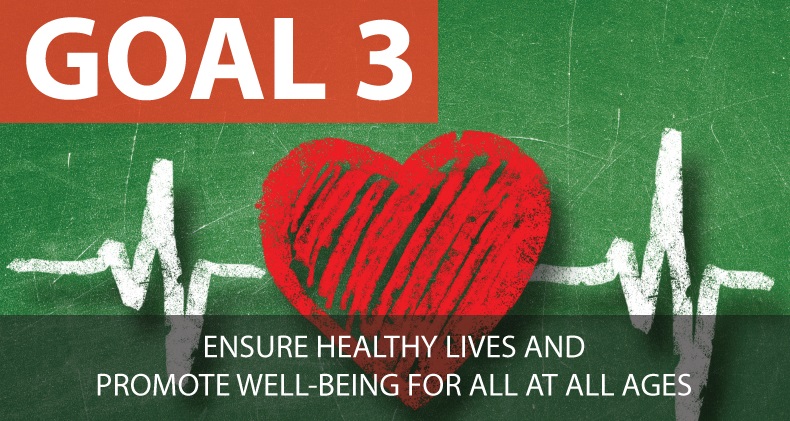Global health indicators featured prominently in the Millennium Development Goals (MDGs) launched in 2000. In fact, three out of the eight MDGs were health related. As a result of public and private investment into these areas, some significant progress has been made.
The third Sustainable Development Goal (SDG) clearly states that by 2030 we want to live on a planet where everyone has access to good mental and physical health all throughout their lives, no matter where they were born. This ambitious goal is supported by nine quantitative and four qualitative targets.
The original health-related MDGs on child and maternal health and infectious diseases are still represented by three even more ambitious targets. The target for universal access to sexual and reproductive health care services has been elevated and new targets have been introduced such as on non-communicable diseases; substance abuse; road traffic accidents and universal health coverage among others.
Although these suggested targets may change as a result of the consultation process, they give us a good sense of the specific areas in which public and private investment will need to be channelled.
How can corporates align their business models and social investments with SDG 3?
Healthcare budgets around the world are under a lot of pressure and in many countries healthcare systems are crumbling. The age old mantra seems to ring true, namely that one can only pick two out of the three key attributes that would ideally describe any healthcare system – affordability, universality, and quality. Universal and good quality healthcare has a very high price tag; a system that is affordable and universal often lacks in quality health outcomes; and affordable quality healthcare is often restricted to the higher socio-economic segments of the population.
This conundrum is exactly what makes SDG 3 an interesting and powerful one. It recognises that firstly, large unmet health needs are equally present in developing and developed nations. Secondly, significant health inequalities exist within nation states. Thirdly, sustainable solutions will likely come from collaboration between the public, private and the not-for-profit sectors as well as from cross-sector and cross-country collaboration between actors in the health, technology and financial services industries.
Here are some examples of organisations aligning their operations, employee skills and societal and community investments to key health challenges:
– New businesses like Omada Health, based out of San Francisco, are starting up with the core purpose of preventing non-communicable chronic diseases;
– GSK has committed to reinvesting 20% of profits made in least developed countries back into those countries to develop health infrastructure;
– Johnson & Johnson has been working with partners to support frontline healthcare workers in the world’s poorest countries;
– Amway’s Power of 5 campaign aims to raise awareness and address malnutrition, which is a significant contributing factor in around half of global under-five deaths.
SDG number 3: Ensure healthy lives and promote well-being for all at all ages, with its specific goals and targets for improving health outcomes, will serve as a global compass to direct public and private investment towards the most pressing health issues. National implementation plans will be formulated on the back of the new SDGs. All of these will be very helpful for companies deciding where and how to invest their financial and non-financial resources. Global health priorities are clear. Collaborative solutions exist. Now it is time for action.
You can view the full Corporate Citizenship SDGs 2015 blog series here.


